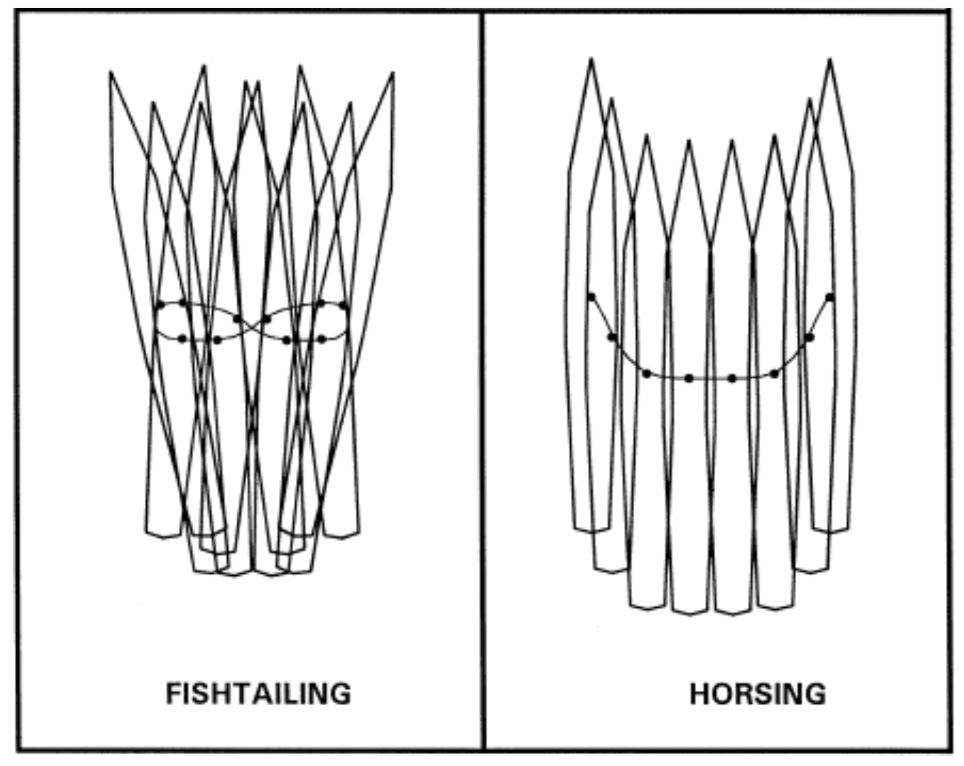DLBA UNIVERSITY
At Anchor wind induced yaw instability of a monohull
OCTOBER 22, 2019
By:
Jonathan Soja, Donald L. Blount and Associates, Chesapeake, Virginia, USA
Jeffrey Bowles, P.E., Donald L. Blount and Associates, Chesapeake, Virginia, USA
There is a delicate balance that must exist between the aerodynamic, hydrodynamic, and mooring forces acting on a floating body restrained by a single anchor (single point mooring). If the balance is not achieved, the floating body will exhibit undesirable motions which have been referred to by the industry as horsing, fishtailing, kiting, and “sailing about at anchor.” Significant work related to the offshore oil industry documents these yaw instabilities on single point moorings; however, the knowledge base is not very well disseminated outside of the offshore sector, especially when considering that vessels of all types are susceptible to this phenomenon.

When the aerodynamic forces dominate the hydrodynamic and mooring forces, no matter the vessel type or configuration, the potential for the undesirable motions to occur exists. With the increased desire for larger interior volumes on vessels, hull and superstructure windages are trending larger and the aerodynamic forces acting on the vessels are becoming more significant, making the phenomenon a more common occurrence.
This paper provides an introductory overview to the phenomenon of yaw instability of a vessel on a single point mooring, and documents a technical investigation into the phenomenon. The research program conducted consists of full-scale sea trials, aerodynamic analysis through computational fluid dynamics, numerical simulations, and physical scale model testing. Results of the research program are presented which demonstrate successful replication and mitigation of the motions.
In case you would like to receive he full paper, or discuss about this subject, please contact Jeffrey Bowles.

REFERENCES
1. U.S. ARMY CORPS OF ENGINEERS, “Design: Moorings,” UFC 4-159-03, Sep. 2012.
2. FLORY, J., and PORANSKI, P., “The Design of Single Point Moorings,” 9th Annual Offshore
Technology Conference, 1977.
3. WICHERS, J., “On the Slow Motions of Tankers Moored to Single Point Mooring Systems,” 8th
Annual Offshore Technology Conference, 1976.
4. MALONEY, E., “Chapman Piloting: Seamanship & Small Boat Handling,” The Hearst
Corporation, 2006.
5. NOEL, J., “Knight’s Modern Seamanship, 18th Edition,” John Wiley & Sons, Inc, 1989.
6. OWENS, R., and PALO, P., “Wind-Induced Steady Loads on Ships,” Naval Civil Engineering
Laboratory, 1982.
7. AAGE, C., “Wind Coefficients for Nine Ship Models,” Hydro- Og Aerodynamisk Laboratorium,
1971.
8. “DDS 568-1 Thruster Maneuvering Systems,” Naval Sea Systems Command, 1987.
Share this article online:
HOW CAN WE HELP YOU?
FEEL FREE TO CONTACT US

DLBA Naval Architects
860 Greenbrier Circle, Suite 201 Chesapeake, Virginia 23320 USA
Phone: 757-545-3700 | Fax: 757-545-8227 | dlba@gibbscox.com
STAY UPDATED
SIGN UP FOR OUR NEWSLETTER
Keep your finger on the pulse of the latest points of focus in naval architecture and engineering: subscribe to DLBA’s concise monthly newsletter. Within it, we briefly describe and picture our latest projects and concepts. We encourage feedback and seek to have our newsletter spark conversation regarding potential collaborations and further advancements as we share our passion for the industry.
